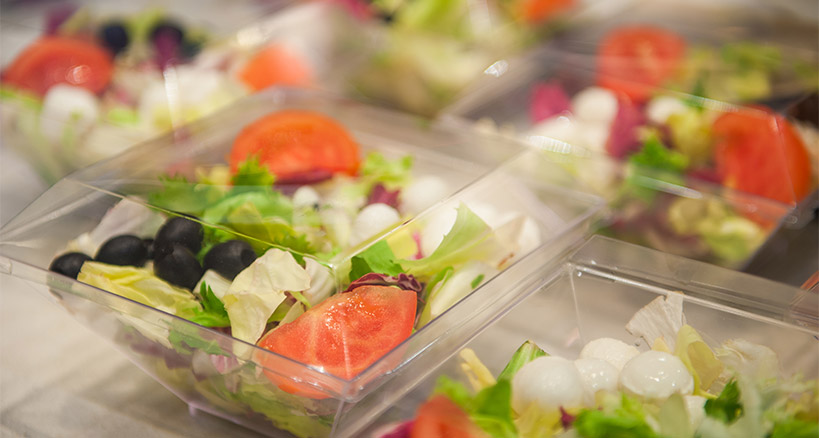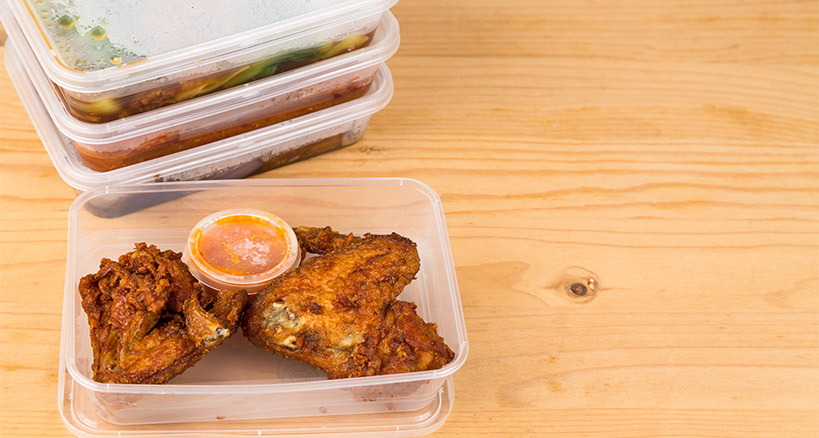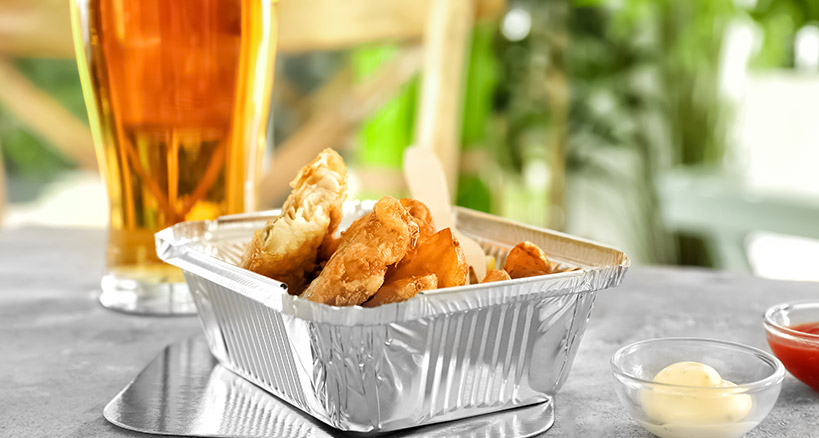
A Guide to Takeout Containers
In today’s mobile society, even the most elegant restaurant has to be prepared for the takeout crowd. Today, smart restaurant owners make it easy to order and pay for takeaway food with the help of apps, smartphones, and online ordering systems. What this means, though, is that restaurants have to be stocked with a steady supply of takeout containers.
Take-out containers have come a long way from the bulky white Styrofoam boxes of years gone by. In recent years, the demand for a new and improved travel food container has graced us with a variety of sizes, shapes, and materials – including reusable containers – and the trick is finding the right ones for your business.
Foam is Still an Option
Many of us use the term Styrofoam to refer to just about anything made of the famous foam material. However, most of us play a little too loose and fast with this registered trademark, which is a polystyrene foam material. This material is not regularly used for packaging and takeout containers; instead the most common white packaging foam is called expandable polystyrene foam, or EPS for short.
Foam containers have gotten a bad rap, and although there are many environmental concerns associated with this product, they are inexpensive and are the classic option for fast-food/takeout establishments. Inexpensive and lightweight, they stay cool to the touch, no matter how hot the contents, and are still an excellent option for packing hot liquids, like hot soup and drinks. However, other food stored in EPS containers can become soggy, which is a problem with fried foods, hot sandwiches, and any dish that is affected negatively by moisture.
Paper Containers are Staging a Comeback
Paper takeout containers are most often associated with Chinese takeout food; however, paper containers can be used for many different types of foods, since they can be used in a microwave with no negative effect on the container or on the contents. Unfortunately, like foam containers, paper retains moisture and hot foods can become soggy. And, unlike foam containers, paper containers are not impervious to heat, making them uncomfortable to hold directly if they contain very hot contents. This dilemma can be solved by using containers with handles, or with carton “sleeves,” or, by placing them in a paper shopping bag. Environmentally speaking, paper is a biodegradable material, making it a more palatable takeout solution than foam for those who are environmentally conscious.

Plastic Has Come a Long Way
Some people view plastic as foam’s slightly less offensive younger brother. Many forms of plastic are problematic for the environment, but there’s no question that it can make a fantastic takeaway container. Many plastic-like, biodegradable materials have been developed in the last few years, and they can create great, environmentally friendly takeout container options when compared to regular plastic containers. However, customers should be aware that, although thrifty people tend to wash and reuse plastic containers, not all plastic receptacles are meant to be reusable.
Heating food in plastic in a microwave has its pros and cons. Harvard Medical School, in an article entitled, “Microwaving Food in Plastic: Dangerous or Not,” discusses these views and more or less gives the green light to reheating food in plastic containers, under certain conditions.
If you want to reuse your plastic containers, look for the recycling number on the bottom of the container. This little number says a lot about the type of plastic it is, what chemicals it is comprised of, and how safe it is for reuse. The numbers are as follows:
#1 – Polyethylene Terephthalate
This type of plastic is most commonly used for water and soda bottles, as well as foods like cooking oil. While they are considered safe for one-time use, it is not recommended to wash and reuse these bottles multiple times.
#2 – HDPE (High-Density Polyethylene)
This type of plastic is most commonly used for milk and laundry detergent, as well as shampoo bottles, among other things. HDPE plastic is considered safe to wash and reuse multiple times.
#3 – PVC (Polyvinyl chloride)
While PVC is linked to many heath issues, including cancer, it can still be found in mattress covers and even plastic wrap for food. It is advised to avoid plastics with PVC altogether, and certainly not to reuse.
#4 – LDPE – Low-density Polyethylene
This type of plastic is mostly used in disposable bags – grocery, garbage, and dry cleaning bags – and in plastic wrap. It is considered safe for reuse.
#5 – PP (Polypropylene)
This type of plastic, which is safe for reuse, is used in harder containers, such as for ice cream and yogurt, as well as for drinking straws.
#6 – PS – Polystyrene
This is often found in plastic silverware, as well as in foam take-out containers and coffee cups. This chemical is not considered safe for reuse.

Aluminum Foil Pans – Another Popular Choice
Aluminum foil pans are another inexpensive option for takeout containers. True, they can’t be used in a microwave, but they can safely be used for heating in the oven, unlike foam, paper, and plastic containers. Aluminum foil transfers heat well; the pan heats up quickly but cools down quickly as well, making it easy to handle. Unfortunately, aluminum foil has a high carbon footprint, making it a less than ideal choice of takeout containers in terms of environmental considerations.
The Environment
Whether they’re made from foam, aluminum foil, paper, or some form of plastic, disposable takeout containers are controversial. An inordinate amount of energy, water, and raw materials are involved in producing them and transportation costs add up when they are shipped. Afterward use they can become recycling, littering and land-fill issues. Therefore, reusable solutions are being explored more vigorously than ever before. For instance, G.E.T’s Eco-Takeouts; is a green alternative that is made of durable polypropylene that can be sanitized in the dishwasher and reused again and again.
What’s Right for You
Ultimately, the best takeout containers for your restaurant will depend on the types of foods you offer, the price, and your environmental concerns. If you’re looking for more high-end appeal, you should eschew foam and aluminum foil pans, and opt for attractive, environmentally safe plastic containers. As your takeaway business grows, however, the most important thing is that you have plenty of containers on hand for takeout. It’s a growing restaurant-industry sector that you simply can’t afford to ignore.